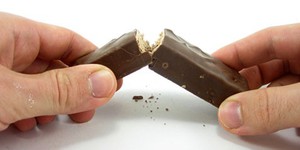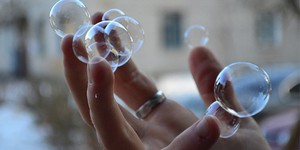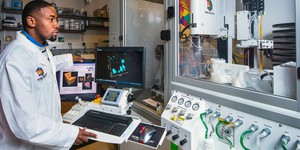Stretchy Balloon Science
Summary
Introduction
Balloons are fun and come in a variety of sizes, colors, and forms that makes them well suited for decorations, water play, modeling, and other creative activities. But balloons also have uses outside of recreation; weather balloons, balloons used to widen obstructed arteries, and balloons that provide transportation are just a few examples. The first balloons were made of animal bladders or intestines. This made way for the latex, rubber, and nylon fabric balloons we see today. Have you ever wondered what makes these materials excellent for balloons? Try the activity to find out!
Materials
- New balloons, identical in size and material
- Permanent marker
- Freezer
- Skewer
- Lip balm or petroleum jelly
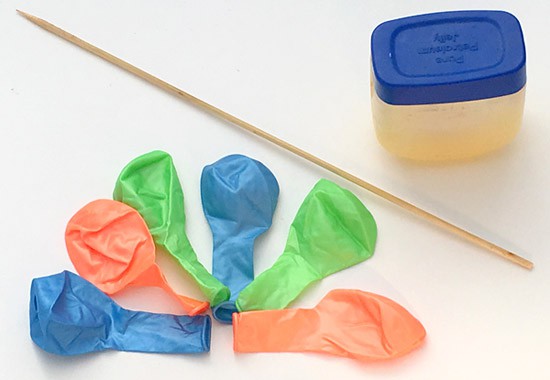 Image Credit: Sabine De Brabandere, Science Buddies / Science Buddies
Image Credit: Sabine De Brabandere, Science Buddies / Science Buddies
Prep Work
- Mark two balloons with permanent marker.
- Cool the two marked balloons in the freezer for at least two hours. Leave the other balloons at room temperature.
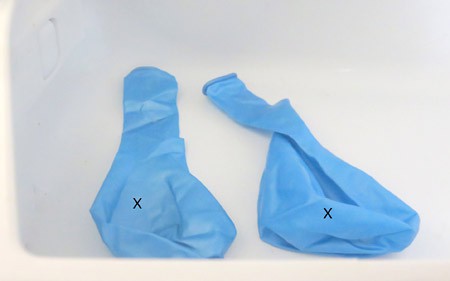 Image Credit: Sabine De Brabandere, Science Buddies / Science Buddies
Image Credit: Sabine De Brabandere, Science Buddies / Science Buddies
Instructions
- Take a room temperature balloon and blow a breath of air into it.How hard it is to blow air into the empty balloon?
- Blow a few more breaths into the balloon.Is it getting easier or harder to push air into the balloon? Why would this be?
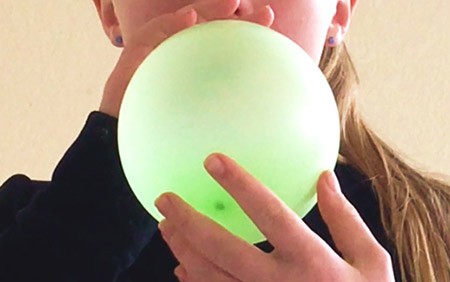 Image Credit: Sabine De Brabandere, Science Buddies / Science Buddies
Image Credit: Sabine De Brabandere, Science Buddies / Science Buddies
- Let the air escape from the balloon and take some deep breaths before continuing.
- Take a balloon out of the freezer and repeat the previous three steps with this balloon.How hard is it to blow up an ice-cold balloon compared to one at room temperature?
- To make a fair comparison, repeat previous steps, now testing the ice-cold balloon first and the room-temperature balloon last.Do your results change? Why would one be more difficult than the other?
- Take one of the room-temperature balloons you just used and blow it up until you are afraid it will burst if you blow any more air into it. Let the air escape.
- Lay a new balloon next to the two other used room-temperature balloons.In what ways do these three empty balloons look similar and different?
- Rub some lip balm on the skewer, starting from the tip.
- Blow up one of the balloons (any of them is fine) until about 2/3 full, and knot it so the air is trapped.What do you think will happen when we poke the balloon with the skewer?
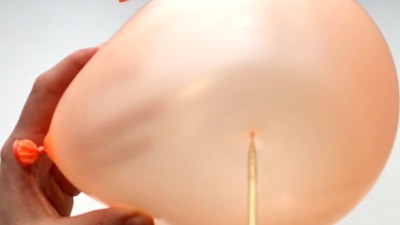 Image Credit: Sabine De Brabandere, Science Buddies / Science Buddies
Image Credit: Sabine De Brabandere, Science Buddies / Science Buddies
- Look at your blown-up balloon.Where would you poke the skewer into the balloon to pop the balloon quickly? Why do you choose that spot? Can you find a spot where you might be able to poke the balloon with the skewer without popping it?
- Poke the balloon to pop it.Did it pop? What do you think creates the loud sound of a popping balloon?
- Inflate another balloon until it is about 2/3 full. Knot it and examine it.If you had to poke the skewer into this balloon without popping it, where would you poke it?
- Try it out.Were you successful?
- If it did not work, try with another balloon. Notice how the rubber near the knot or the top looks darker and thicker. These are indications that the rubber can still stretch there. Try it a few more times until you succeed in poking your skewer through the balloon without popping it.Why do you think the skewer can enter the balloon in these spots without popping the balloon?
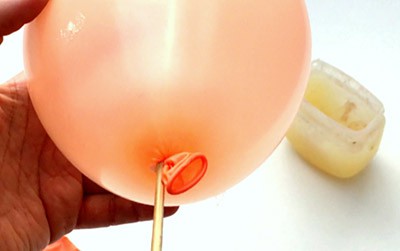 Image Credit: Sabine De Brabandere, Science Buddies / Science Buddies
Image Credit: Sabine De Brabandere, Science Buddies / Science Buddies
What Happened?
Did the cold balloon require more effort to blow up compared to the one at room temperature? Did your balloon pop when you poked it in a spot where the balloon was stretched taut? This is expected.
The particles in cold material move and wiggle less and can hold onto each other more easily. As a result, a cold balloon resists being stretched more than a warmer one does. You perceived this as having to work harder to blow up the cold balloon. You might have noticed that this resistance disappears as the balloon warms up.
Did you observe how the balloons that were blown up with only a few breaths regained their original shape and size when the air was let out, while the one that was blown up completely did not quite regain its original size? This is typical for elastic materials. If you had blown even more air into the balloon, it would have eventually broken.
When you tried to pop a taut part of the balloon by poking it, it probably cracked. Think of a stretched rubber band. When you cut it in the middle, the two ends snap back. In a similar way, the small hole in the taut surface made part of the surface snap back, pulling the material around back. This pull tore the surface of the balloon open. In an instant, the balloon was torn into pieces. The air in the balloon rushed out, creating a shockwave, which you could probably hear as a loud bang.
When you poke a sharp object in a place where the material can still stretch, like close to the knot or near the top, you can pierce it without destroying the balloon. When the material around the puncture is not stretched, it does not pull on the created hole and thus does not tear it open. The grease helps to seal the hole.
Digging Deeper
The stretchiness of a balloon is based on its material. Most balloons are made of rubber, latex, or nylon fabric, which consist of long particles called polymers. Polymers are like strands of cooked spaghetti, but a lot smaller! When you stretch these materials, the polymers in them straighten out and slide alongside and over one another. When you let go, small forces between the polymers pull them back together, like a contracting spring. Because of this, these materials are called "elastic," which means they spontaneously return to their normal shape after they are stretched or compressed.
When you blow up a balloon, the trillions of polymers in its material are straightening and sliding over each other: the first puff of air straightens them, and after that, each blow works to push the polymers over one another, working against the forces that pull them back together. If you forget to trap the air inside the balloon by pinching it closed, the polymers pull back together. This pushes the air out of the balloon, and you will have to start over!
Balloons are elastic, but only to a certain extent. When you stretch them, they will generally regain their original form after you let the air go. However, if you stretch them too much, they will never quite regain their original form. If you stretch them even more, you will eventually reach the breaking point at which the material ruptures.
The temperature of matter is an indication of how much its particles move and wiggle around. As higher temperatures mean more movement, the polymers in a room temperature balloon wiggle and move more than those in a cold balloon. A lot of materials become brittle and inflexible when cooled. A slice of bread is a good example: it is flexible and sometimes elastic at room temperature, but loses these characteristics when frozen. This is different with balloons. A cold balloon is still elastic but resists being stretched more than a warmer one does.
Ask an Expert
For Further Exploration
- This activity compares ice-cold and room-temperature balloons. Add a warmed-up balloon to the comparison. You can warm balloons in a warm water bath.
- Inflate two new balloons to the same size. Knot them carefully so no air escapes. Cool one balloon in the refrigerator, the freezer, or outside on a freezing cold day, keeping the other balloon at room temperature. After about an hour, compare the two balloons. How are they different? Why does this happen?
Related Resources
Project Ideas
Activities
Project Guide
Links
- Blog Post: Bend or Break? Candy Science




